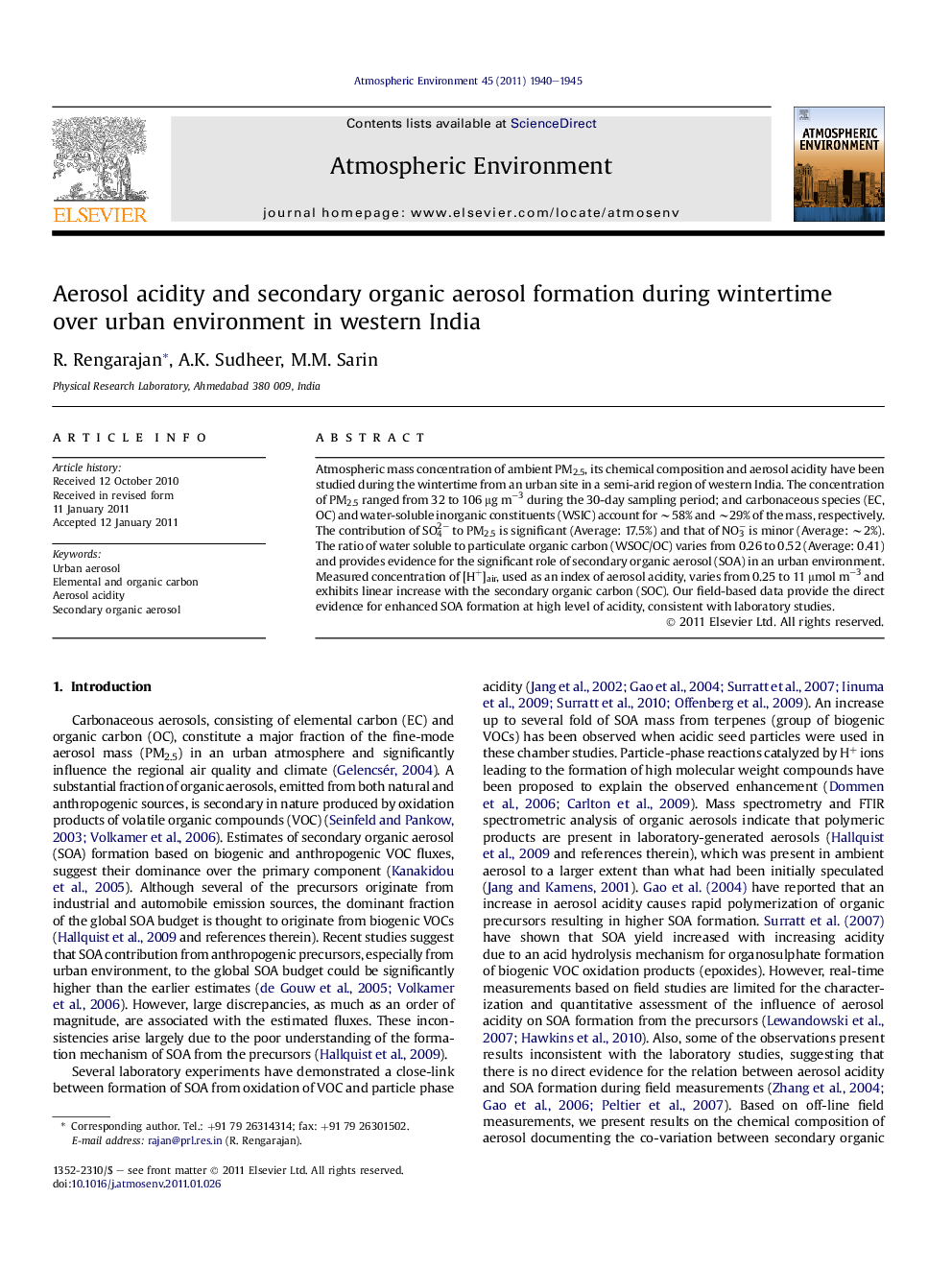| Article ID | Journal | Published Year | Pages | File Type |
|---|---|---|---|---|
| 4439936 | Atmospheric Environment | 2011 | 6 Pages |
Atmospheric mass concentration of ambient PM2.5, its chemical composition and aerosol acidity have been studied during the wintertime from an urban site in a semi-arid region of western India. The concentration of PM2.5 ranged from 32 to 106 μg m−3 during the 30-day sampling period; and carbonaceous species (EC, OC) and water-soluble inorganic constituents (WSIC) account for ∼58% and ∼29% of the mass, respectively. The contribution of SO42− to PM2.5 is significant (Average: 17.5%) and that of NO3− is minor (Average: ∼2%). The ratio of water soluble to particulate organic carbon (WSOC/OC) varies from 0.26 to 0.52 (Average: 0.41) and provides evidence for the significant role of secondary organic aerosol (SOA) in an urban environment. Measured concentration of [H+]air, used as an index of aerosol acidity, varies from 0.25 to 11 μmol m−3 and exhibits linear increase with the secondary organic carbon (SOC). Our field-based data provide the direct evidence for enhanced SOA formation at high level of acidity, consistent with laboratory studies.
Research highlights► In a semi-arid urban site from western India, PM2.5 mass ranged from 32 to 106 μg m−3 during winter. ► (EC + OC) and water-soluble inorganic constituents (WSIC) account for ∼58% and ∼29%, respectively. ► Contribution of SO42− is significant (Average: 17.5%) in WSIC and that of NO3− is minor (∼2%). ► Concentration of [H+]aerosol, an index of aerosol acidity, exhibits linear increase with SOC.
